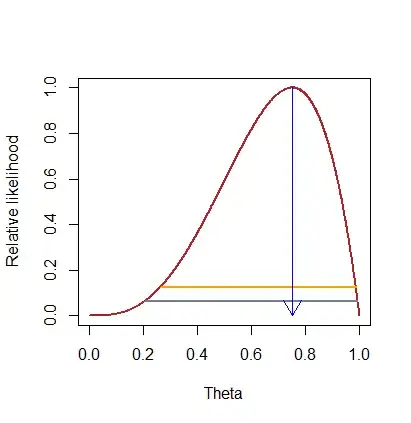Well, most "simple-to-understand" answers to your question will no doubt be quite contrived (and I will include one at the end of this answer), and so I will first concentrate on the rationale for insisting on the technical requirement at all, entirely from the viewpoint of an engineer interested in using probability and statistics as opposed to a mathematician or statistician interested in the mathematical aspects.
The kinds of questions I would like answers to are "What is the probability that the random variable has value between $a$ and $b$, that is, what is $P\big(X \in (a,b)\big)$?" or perhaps I want $P\big(X \in (a,b]\big)$ or $P\big(X\in [a,b)\big)$ or $P\big(X\in [a,b]\big)$. It turns out that all my questions can be answered if I know the function $F_X(u)$ (called the cumulative probability distribution function or CDF) of $X$ which is defined as
$$F_X(u) = P(X \leq u) = P\big(\{\psi\colon X(\psi) \leq u\}\big).$$
But this means that I must restrict the name "random variable" to only those mappings $X\colon \Omega \to \mathbb R$ which have the property that $\{\psi\colon X(\psi) \leq u\}$ is an event for all choices of real number $u$. Recall that probabilities are defined only for those special subsets of $\Omega$ that are events, and that every subset of $\Omega$ is not necessarily an event, and such nonevents have no probability assigned to them. Thus the technical requirement is imposed so that we can be sure that we can talk sensibly about the CDF of $X$. For all choices of real number $u$, the set $\{\psi\colon X(\psi) \leq u\}$ whose probability is going to be defined as the value of $F_X(u)$ is guaranteed to be an event and so it does have a probability. In short, the technical requirement assures us that $F_X(u)$ is properly defined for all $u$.
So, are there mappings $Y\colon \Omega\to \mathbb R$ that are not random variables? Yes, and here is a contrived example. We take $\Omega = \{\psi_1, \psi_2, \psi_3\}$ and define the event space as the following collection of four subsets of $\Omega$:
$$\big\{\emptyset, \{\psi_1\}, \{\psi_2, \psi_3\}, \Omega\big\}.$$
Note that we are explicitly denying that the singleton subsets $\{\psi_2\}$ and $\{\psi_3\}$ are events, and similarly that the doubleton subsets $\{\psi_1, \psi_2\}$ and $\{\psi_1, \psi_3\}$ are events. The singleton subset $\{\psi_1\}$ is an event and we can talk about the probability that the outcome $\psi_1$ has occurred, but the the singleton subsets $\{\psi_2\}$ and $\{\psi_3\}$ are not events and we are not allowed to talk about the probability that the outcome $\psi_2$ has occurred or the probability that the outcome $\psi_3$ has occurred; these occurrences don't have probabilities. We do have a probability associated with the event $\{\psi_2, \psi_3\}$ which occurs whenever the outcome is a member of the set $\{\psi_2, \psi_3\}$, that is, the outcome is either $\psi_2$ or $\psi_3$, but we can't subdivide this probability value into the probability that $\psi_2$ occurred and the probability that $\psi_3$ occurred: $\{\psi_2\}$ and $\{\psi_3\}$ are not events in the event space defined above. Thus, any mapping $Y$ that maps $\psi_2$ and $\psi_3$ onto two different real numbers is not a random variable defined on this sample space (and associated event space). Why not? Well, assume without loss of generality that $Y(\psi_2) = x_2 < Y(\psi_3) = x_3$, and consider the set $\{\psi\colon Y(\psi) \leq x_2\}$. This set is either $\{\psi_1, \psi_2\}$ or $\{\psi_2\}$ according as $Y(\psi_1)$ is smaller than or greater than $x_2$. But neither set is an event, and so
$F_Y(x_2)$ is undefined. Ergo, $Y$ cannot be called a random variable.
